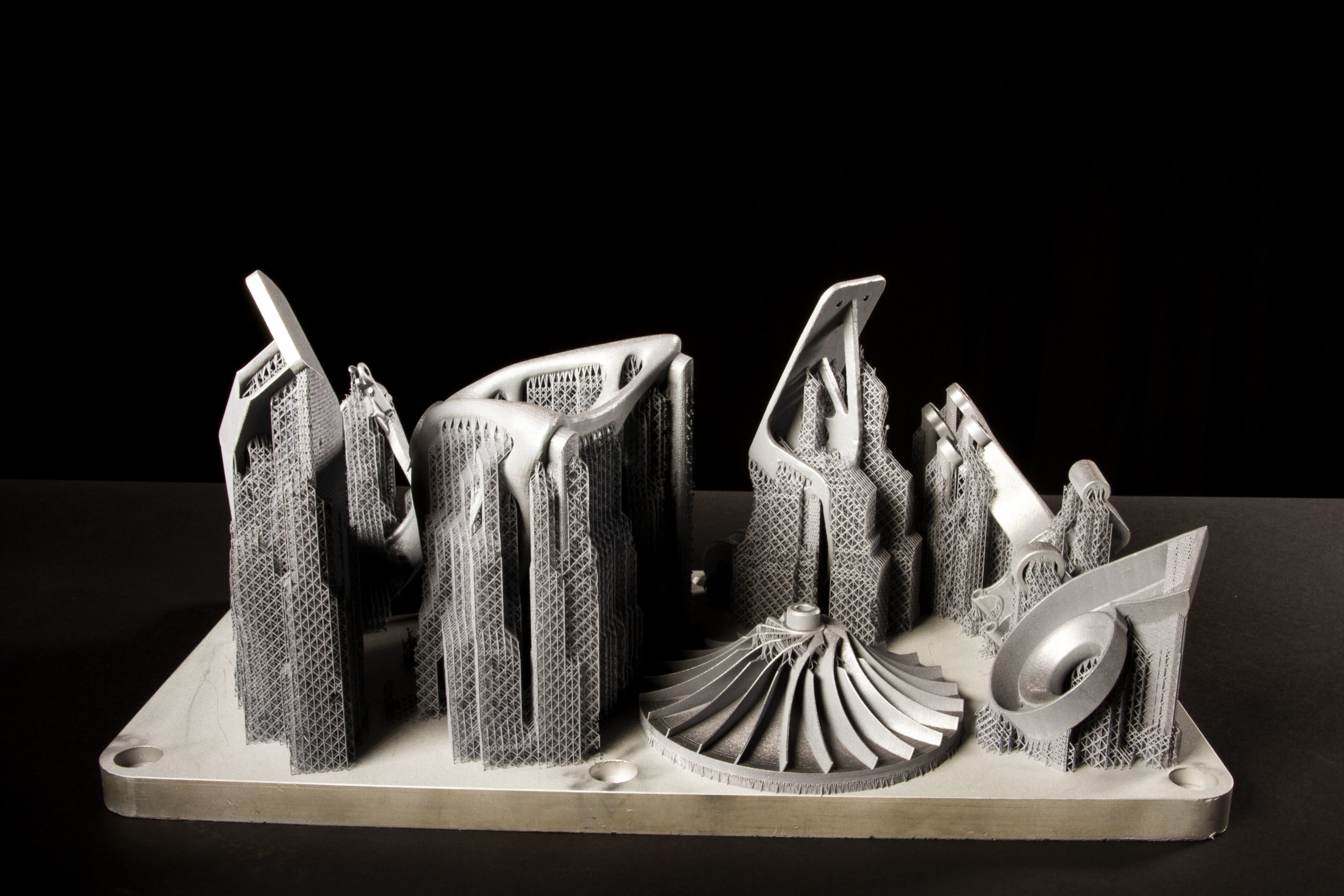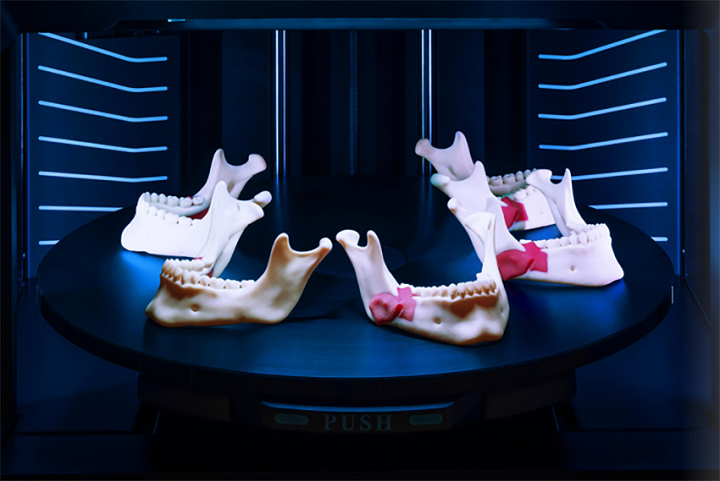As one of 3D printing’s pioneers, long-running additive manufacturing (AM) service provider Materialise (NASDAQ: MTLS) is one of a growing number of companies whose financial statements are shared with the public, providing a compelling insight into the performance and operations of the company. On March 3, 2022, the Leuven, Belgium brand reported a very upbeat earnings report derived from its strong position in global markets. Moreover, Materialise said revenue rose by 21% in 2021, surpassing €205 million, with the final quarter of the year in line with expectations.
Driven by very robust revenue growth in each of its segments (software, medical, and manufacturing), Materialise boasted an all-time high of close to €57 million during the fourth quarter of the year, surpassing an already stellar third quarter in 2021.
Back in April 2021, during an earnings call with investors, Executive Chairman Peter Leys anticipated that the company’s consolidated revenues in the second quarter of 2021 would continue to grow sequentially and had the potential to represent sequential growth of up to 10% compared to the previous quarter.
Now that the earnings report for 2021 has been released, investors can look at Materialise’s consolidated financial position. Profit was also a common denominator in the 2021 full-year earnings report, with the company achieving net earnings worth €13.1 million (or 23 cents per share) for the whole year–– a win compared to the loss of €7.2 million (or 13 cents per share) in 2020. Similarly, during Q4, the business boasted a net income of €4.8 million (or eight cents per share) after reporting a loss in the same period a year earlier.
Materialise’s software segment accounted for 22% of total revenue for the quarter, while medical and manufacturing corresponded to 36% and 42%, respectively. Furthermore, the business said that adjusted EBITDA for the quarter was €10.5 million, representing a margin of 18.4%, with the software and medical segments, in particular, realizing robust EBITDA margins, more than 45% for software and over 30% for medical.
Even though 2021 was still dominated by Covid-19 restrictions and impacted by supply chain issues, Materialise Founder and CEO Fried Vancraen said he was very proud of what company employees had achieved.
“Overall, we believe our consistent performance during the crisis period has strengthened our position in the markets we serve and has demonstrated to our customers and partners that Materialise is a sustainable company, one they can rely on for their long-term future,” described Vancraen.
Following the release of the financial report, Vancraen said during an earnings call with investors that the medical segment, in particular, broke the €20 million barriers for the first time after realizing revenues of almost €23 million in 2021. In addition, revenue from medical software sales grew 25%, while revenue from medical devices and services increased 18% compared to last year. Most of this was a direct result of the Mimics Innovation Suite, medical software for engineers that want to develop or produce medical devices based on medical image data.
Chief Financial Officer Johan Albrecht zeroed in on how the growth was driven by new models that aid and make use of artificial intelligence (AI) or enable users to link with their own AI developments. Similarly, the Mimics Innovation Suite has also become an engine to explore and develop new augmented reality and virtual reality applications in the medical field, explained Albrecht.
“This has led to growth in both the medical device company and the hospital markets, where we will be able to help support the medical treatments over the future. Our Medical Device activity had solid growth, especially in craniomaxillofacial surgery and in an extremely volatile environment. With hospitals making certain shifts in prioritization due to Covid, our design and production team provided continuous service. In addition, in the middle of the challenging Covid-related circumstances, we were one of the first companies to bring our mass customization of medical guides and implants fully in line with the new European Medical Device Directive,” Albrecht discussed.
Although the focus of the report was obviously the company’s financial standing, executives explained what its situation was in Ukraine as the Russian invasion continues to escalate and the humanitarian crisis deepens. Leys explained that the firm’s 430 collaborators in Ukraine are mainly active in engineering, software development, and supporting IT and staff functions.
Further discussion of the ongoing conflict revealed that the impact of the war in Ukraine could be minimal for Materialise’s customers and the continuity of the business, mainly because the firm’s workforce in the Eastern European country continues to work whenever they can, while Materialise colleagues with similar skills and competencies elsewhere in the world are stepping in to assist them. As part of its support to Ukrainian employees, Materialise is offering them alternative housing and office space both within and outside of the country, so they can continue their work.
Even though Leys reassured investors that management considers the war between the countries where Materialise has no significant sales will not impact the fundamentals of its global business model, the recent onset of hostilities in Ukraine adds a level of complexity to the outlook for 2022, said the executive.
Following its record performance in 2021, Materialise anticipates its more mature lines of business (particularly software and medical), having the potential to continue to grow solidly with a healthy margin. Simultaneously, the service provider plans to increase spending significantly, especially in R&D and in S&M, to accelerate the development of its new growth businesses, in particular, the software cloud platform and medical and wearable verticals. As a result, in 2022, annual revenue could grow by at least 10% compared to 2021, concluded Leys.
The company established that after serious development efforts in 2021, this year would see multiple releases of new products fitting in its broader software cloud platform strategy, including a newly acquired Link3D, an additive workflow, and digital manufacturing software company that supports customers in major manufacturing industries to scale their AM operations. Following the anticipated official releases of the new products at the Detroit AM event RAPID in May 2022, executives will provide further details on the company’s cloud strategy.
Subscribe to Our Email Newsletter
Stay up-to-date on all the latest news from the 3D printing industry and receive information and offers from third party vendors.
Print Services
Upload your 3D Models and get them printed quickly and efficiently.
You May Also Like
AFRL Funds Flexible 3D Printed Antenna Arrays With Real Time Correction
Washington State University (WSU), the University of Maryland, the University of British Columbia, and Boeing researchers have completed work on additively manufactured antenna arrays, which have been published in Nature...
Incus Releases Hammer Pro25, Proving Innovation Doesn’t Need to Be Flashy
Viennese firm Incus is showcasing the new Hammer Pro25. That system is meant to be a scalable Slurry SLA unit created for continuous manufacturing (Incus uses DLP but we refer...
3D Printing News Briefs, October 25, 2025: Strategic Investment, Inner Ear Organoids, & More
In this weekend’s 3D Printing News Briefs, we’ll start off with some business news, as Xact Metal announced continued double digit growth in Q2 and Q3 of 2025, and the...
Safran Buys Three Lithoz 3D Printers for Casting Cores
Safran Aircraft Engines has bought three Lithoz CeraFab System S65 for its Gennevilliers site. Gennevilliers is a main site for Safran to make cast and forged parts for aero engines....






































